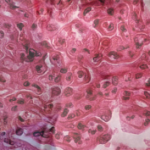Synthesis and Lessons Learned
The MMF studies have certainly taught us important lessons in trial design and have added a major new drug to the therapeutic armamentarium in lupus. On the other hand, they also have highlighted important shortcomings of MMF, such as failure of a significant number of patients (approximately 50%) to reach complete response; assessment of this agent is also limited by lack of long-term (beyond five years) follow-up. Although there is no head-to-head comparison between MMF and AZA as induction regimens, it is reasonable to assume that MMF could be the drug of first choice for induction of remission in moderately severe LN, especially in black and Hispanic patients. This recommendation is justified on the basis of better-quality data for MMF originating from large centers worldwide and clinical experience whereby a few patients refractory to CY may respond to MMF. This approach should not be perceived as abandoning AZA altogether. In our opinion, AZA may be used both as an induction therapy in milder LN cases in white patients and as maintenance therapy in most patients, except probably those with severe disease and certain racial/ethnic characteristics.
